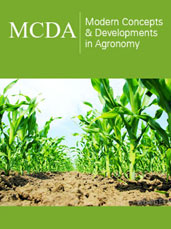- Submissions

Full Text
Strategies in Accounting and Management
Fresh Accounting and Financial Review of Islamic and Conventional Banks of Pakistan
Waheed Ullah Shah1*, Ibtissem Missaoui2, Atta Ullah1 and Naveed Jan1
1Business School, Shandong Normal University, Shandong Jinan, China
2Higher Institute of Management of Sousse, Tunisia
*Corresponding author:Waheed Ullah Shah, Business School, Shandong Normal University, Shandong Jinan, China
Submission:January 29, 2025;Published: February 07, 2025

ISSN:2770-6648Volume5 Issue 3
Abstract
This study investigates a fresh strategic financial and accounting review of twelve prominent Islamic and conventional banks in Pakistan, analyzing their performance across key financial metrics. We examine 52- week range indicators such as bid/ask prices, market capitalization, trading volume, revenue, net income, and various profitability ratios to assess their market behavior, growth, and risk. Our findings reveal that banks like Meezan Bank (AZAN), United Bank Limited (UBL), and National Bank of Pakistan (NBPK) exhibit strong market presence, high revenue generation, and profitability, while others, such as the Bank of Khyber (BOK) and the Bank of Punjab (BOPU), show weaker financial health, with low profitability and limited market presence. Key insights from this comparison include AZAN’s robust market valuation, strong return on equity (ROE), and high dividend yield, suggesting it is a preferred choice for investors and customers. Conversely, BOK’s limited trading volume and poor profitability indicate challenges for both market participants and management. This study offers valuable implications for financial decisionmakers, guiding customers, investors, speculators, management, and policymakers in understanding the competitive landscape of Pakistan’s banking sector and making informed choices based on financial health, risk, and growth potential.
Keywords:Islamic banks; Conventional banks; Financial ratios; Market volatility; Accounting approach
Introduction
The financial sector serves as a cornerstone of economic stability and growth, with banks playing a pivotal role in facilitating economic activities through credit provision, liquidity management, and financial intermediation. Several studies explore the Islamic and conventional banking sectors of Pakistan in different contexts [1-3]. In Pakistan, the banking industry is characterized by a dual framework comprising Islamic and conventional banks, each guided by distinct operational philosophies. Islamic banks operate in adherence to Shariah principles, avoiding interest-based transactions and emphasizing profit-sharing and ethical investments. In contrast, conventional banks follow a profit-maximization approach through interest-based lending and other financial services. The coexistence of these banking paradigms provides a unique opportunity to explore their comparative performance, particularly through strategic accounting and financial metrics. This accounting review explores the comparison between the Islamic and conventional banking sectors of Pakistan using ratio analysis, including metrics such as share price bid/ask spread, trading volume, market capitalization, revenue, net income, Return On Assets (ROA), Return On Equity (ROE), Earning Per Share (EPS), Price Earning Ration (P/E ratio), dividends, book value per share, outstanding shares, and price-tobook ratio based on these finance books [4-6] . The financial landscape of Pakistan has seen notable growth in Islamic banking, with several studies comparing Islamic and conventional banks’ performance, risk management, and efficiency [3,7,8]. Islamic banks in Pakistan are more capitalized, liquid, and less risky but face challenges in generating comparable returns [9].
They exhibit strong risk management, particularly in liquidity and capital, but struggle with non-performing loans [10]. Islamic banks are also more resilient during financial crises due to adherence to Shariah principles, which limit speculative activities [11].
Islamic banks’ profitability is influenced by size, management efficiency, and legal frameworks, though conventional banks tend to be more profitable [12]. Risk management studies highlight challenges like Shariah non-compliance and credit risk, exacerbated by cybersecurity threats, suggesting the need for a dual-risk framework [13]. Islamic windows within conventional banks are gaining demand, but trust in Shariah compliance remains a barrier [1]. Islamic banks demonstrate higher stability during economic downturns but face diseconomies of scale compared to conventional banks [14,15]. Studies show Islamic banks are less affected by reputational risks [16] and have better liquidity management during financial stress [17]. The motivation for this study arises from the evolving financial landscape in Pakistan, where Islamic banking is gaining traction amidst a predominantly conventional banking system. Stakeholders, including customers and investors, increasingly seek insights into the efficiency, profitability, and risk dynamics of these two banking systems. While prior studies have explored certain aspects of Islamic and conventional banking, a comprehensive review employing a ratiobased comparative framework remains scarce. This study bridges this gap by providing an in-depth analysis of strategic accounting and financial metrics, thereby offering valuable perspectives on the operational and financial dynamics of both banking paradigms. This review makes three substantial contributions. First, it provides a detailed comparative analysis of Islamic and conventional banks in Pakistan using a robust set of financial ratios. Second, it identifies trends, strengths, and weaknesses in each banking system, enabling stakeholders to make informed decisions. Third, it highlights the implications of these findings for sustainable banking practices, particularly in an emerging economy like Pakistan. By integrating these dimensions, the study not only contributes to academic literature but also offers practical insights for industry practitioners.
The significance of this study extends to a diverse range of stakeholders. Customers gain clarity on the financial health and ethical alignment of their preferred banking system, helping them make choices that align with their values and financial goals. Investors and speculators can leverage the findings to make informed decisions, optimize their portfolios, and manage risks effectively. Management teams within banks can identify areas of improvement and strategize to enhance operational efficiency. Policymakers, on the other hand, can use the findings to formulate regulations and policies that foster a balanced and competitive financial ecosystem. By addressing the informational needs of these stakeholders, this study aims to contribute to the broader discourse on financial innovation and stability in Pakistan’s banking sector.
Literature Review
In new era the financial landscape of Pakistan has seen a marked growth in the Islamic banking sector, prompting several studies comparing the financial performance, risk management, and efficiency of Islamic and conventional banks. A critical tool for evaluating the financial health and performance of banks is the use of financial ratios and other accounting measures. Financial Statement Analysis (FSA) is crucial in assisting banks to make informed investment and funding decisions that maximize profitability and returns. According to Olayinka [18], the use of a combination of financial ratios provides a comprehensive evaluation of bank performance, which extends beyond just investment decisions to more strategic areas of management. Such analyses can significantly enhance a bank’s ability to navigate financial uncertainties and improve its operational efficiency.
In terms of economic efficiency, studies have highlighted the resilience and risk management strengths of Islamic banks, particularly in comparison to conventional banks in Europe. A study applied Data Envelopment Analysis (DEA) to assess the efficiency of 1,460 financial institutions and found that Islamic banks exhibited superior efficiency, especially in risk management [11]. The study emphasized that the resilience of Islamic banks is largely attributed to their adherence to Sharia principles, which prohibit highly speculative and risk-laden activities, thus ensuring more stable operations in times of financial distress. Similarly, a study investigated profitability determinants for both Islamic and conventional banks in Asia and found that Islamic banks are generally affected by factors such as size, management efficiency, inflation, and legal frameworks, which contribute to their relatively stable financial performance [12]. Financial performance studies comparing Islamic and conventional banks in Pakistan have yielded mixed results. A study utilized financial ratio analysis to examine the performance of Islamic and conventional banks in Pakistan from 2008 to 2019 [9]. Their study found that Islamic banks were better capitalized, less risky, and more liquid compared to conventional banks. However, conventional banks exhibited higher profitability levels, highlighting that Islamic banks, while robust in terms of liquidity and capital, often face challenges in generating comparable returns. This observation underscores the need for greater financial literacy and branch expansion to further strengthen the Islamic banking sector in Pakistan. Additionally, a study analyzed the impact of credit risk on bank-specific factors for both Islamic and conventional banks in Pakistan and concluded that Islamic banks are less affected by the Z-score but experience significant challenges due to non-performing loans (NPLs), which increase debt risks [10]. Risk management in the Islamic banking sector has been a focal point in several studies. A study focused on the Discretionary Loan Loss Provisions (DLLP) in Gulf Cooperation Council (GCC) countries and observed that DLLP negatively affects banking stability, particularly in Islamic banks [2]. The study suggested that Islamic banks may need more rigorous regulation to mitigate the adverse effects of DLLP, which has significant differences across banking sectors. Furthermore, a study identified six major risk themes in Islamic banking, including stability, credit risk, and Shariah non-compliance risk [13]. These risks were found to be exacerbated by factors such as cybersecurity threats, which have been particularly pronounced in the evolving digital landscape of banking. To counter these risks, the authors propose a dual-risk framework for Islamic banks, addressing both internal and external risks and highlighting the need for robust institutional regulation to enhance risk management practices. Another aspect that has garnered significant attention is the customer preference for Islamic banking products and services. A study on customer perceptions of Islamic windows in conventional banks in Pakistan, revealing that while these customers expressed concerns over Shariah compliance, mid-aged customers preferred Islamic windows due to the variety of options they offered [1]. This finding indicates that there is a growing demand for Islamic financial services, but the trust in Shariah-compliant operations remains a key barrier to expansion. The study suggests that to better serve this growing market, Islamic windows must enhance their Shariah compliance and leverage technology to improve customer satisfaction. Further investigations into the profitability determinants for both Islamic and conventional banks in Pakistan have revealed differing trends. According to a study, Islamic banks are influenced by size, management efficiency, and economic growth in ways that differ from conventional banks [10]. The study emphasizes that factors such as credit risk and capital structure have a more pronounced effect on the profitability of conventional banks, suggesting that the operational and financial dynamics of both banking models are uniquely structured. These findings are supported by the research study who explored the short-term relationship between Islamic and conventional bank term deposit rates in Pakistan, revealing that Islamic bank rates are heavily dependent on conventional bank rates, suggesting a high degree of interaction between the two sectors [3].
The growing demand for Islamic banking products in Pakistan is also reflected in the increasing adoption of International Financial Reporting Standards (IFRS) and AAOIFI (Accounting and Auditing Organization for Islamic Financial Institutions) standards. A similar study examined the value relevance of accounting information across Islamic, conventional, and hybrid banks, finding that Islamic banks, particularly those adhering to AAOIFI standards, demonstrated a higher value relevance, which strengthens investor confidence [19]. This indicates the importance of consistent financial reporting standards, as it enhances transparency and accountability in Islamic banks. Furthermore, the comparative study explored the financial stability efficiency of Islamic and conventional banks, revealing that Islamic banks demonstrated a 5.30% higher stability efficiency than conventional banks across multiple regions, including Pakistan [14]. This result suggests that Islamic banks are better equipped to withstand financial shocks, contributing to their higher stability in periods of economic distress. Additionally, the meta-frontier stability function approach used by a study highlighted that although Islamic banks exhibit higher technical efficiency, they often face higher diseconomies of scale [15]. This suggests that while Islamic banks are efficient in operations, they may encounter challenges in scaling their operations compared to conventional banks.
Recent studies on Islamic and conventional banks in Pakistan reveal significant differences in their financial performance, risk management, and operational efficiency. Research by Murad Ali [20] highlighted that Islamic banks are better capitalized and allocate more assets toward financing, exhibiting improving profitability compared to conventional banks. This is largely driven by their adherence to Shari’a compliance, which attracts customers seeking ethical financial products. On the other hand, conventional banks offer a wider range of services, which enhances their customer appeal. Butt Ayub [16] examined reputational risk and found that Islamic banks are less affected by reputational risk compared to conventional banks, suggesting a more resilient risk profile. Lastly, a study investigated the relationship between profitability and liquidity for South Asian banks, revealing a concave nonlinear relationship. Islamic banks in Pakistan showed less sensitivity to liquidity changes than conventional banks, indicating that they are less affected by liquidity shortages, which enhances their profitability during periods of financial stress [17]. This finding points to the importance of liquidity management frameworks, such as those suggested in Basel III, which may need to be adapted for the unique requirements of Islamic banking institutions.
Data and Accounting Approach
This study utilizes data from 12 banks operating in Pakistan, including both Islamic and conventional banks: NBP, AMZN, BAFL, BIPL, UBL, ABL, HBL, BKEQ, MCB, ASBK, BOPU, and BOK (for details see Table 1). The financial ratios (Table 2) and key accounting statistics analyzed include share price bid/ask spreads, trading volume, market capitalization, revenue, net income, return on assets (ROA), return on equity (ROE), earnings per share (EPS), price-to-earnings (P/E) ratio, dividends, book value per share, outstanding shares, and price-to-book (P/B) ratio. The data were collected from Investing.com, a reliable and widely used financial data platform. The time frame for the analysis spans the last 52 weeks to ensure comprehensive performance. This dataset enables a robust comparative analysis between Islamic and conventional banks, offering insights into their financial health and operational efficiency.
Table 1:Financial ratios used in this study.

Note: Financial ratios are derived from finance books [4-6].
Table 2:Islamic and conventional banks used in this study.

Financial Analysis and Discussion
Table 3 presents key financial metrics of twelve Pakistani banks, comparing their performance and market data. For each bank, the table includes Bid/Ask prices, 52-week range, volume, average volume (3m), 1-year change (%), market capitalization, and shares outstanding. First, examining the Bid/Ask prices, we see that NBPK (National Bank of Pakistan) and BOK (Bank of Khyber) have identical bid and ask prices (60.29 and 6.68, respectively), indicating stable pricing, while AMZN (Allied Bank) and UBL (United Bank) have wider spreads, with ask prices significantly higher than their bid prices. BIPL (Bank Islami Pakistan) has one of the narrowest spreads, suggesting relatively more efficient price discovery compared to the wider spreads of banks like MCB and HBL (Habib Bank). Looking at the 52-week range, we see that NBPK has had the largest price movement, ranging from 26.60 to 71.75, indicating high volatility, while BOK has had the smallest range (4.59 to 8.20), showing more price stability. UBL (163.51 - 341) and MCB (153 - 265.60) have also demonstrated significant price fluctuations, while banks like ASBK (Al Baraka Bank) and BOPU (Bank of Punjab) have had moderate ranges, indicating more conservative market behavior. In terms of volume and average volume (3m), BOPU stands out with a volume of 9.546M, significantly higher than the other banks. AMZN and HBL also show relatively high trading volumes (1.435M and 2.98M, respectively), signaling active market participation. On the other hand, ASBK and BOK have lower trading volumes, with BOK having the smallest at 49.5K, suggesting limited investor interest or lower market liquidity. Finally, the 1-year change (%) indicates relatively stable growth across most banks, with UBL (1.464%) having the highest growth, reflecting strong market performance, while BOK had the lowest (0.38%), signaling a relatively stagnant performance. Market capitalization shows AMZN (421.8B) as the largest by far, with NBPK (128.3B) and UBL (408.6B) also ranking high. Meanwhile, BOK (15.05B) and BOPU (42.42B) are much smaller in terms of market value, highlighting differences in size and market presence among these banks.
Table 3:Financial terms used in this study for Islamic and Conventional banks.

The 1-Year Change (%) in stock prices reflects the performance of each bank over the past year, with positive growth indicating investor confidence and strong market performance. Banks like UBL (1.464%) and NBPK (1.129%) show positive growth, signaling strong profitability, effective management, and favorable market conditions. This growth can lead to higher market capitalization, making it easier for these banks to raise capital and expand operations. On the other hand, banks with low or negative growth, such as BOK (0.38%) and BIPL (0.158%), may face investor skepticism, indicating financial struggles or negative external factors. Limited or declining stock performance can lead to difficulties in raising capital and higher borrowing costs, which may restrict growth opportunities. Additionally, these banks may face pressure to improve profitability or adjust their strategies to regain investor confidence. The growth of a bank’s stock can also influence its reputation and market position. Banks with stronger growth, like UBL, may gain a competitive edge and enhance their standing in the market, while banks with stagnating or declining stock prices may lose market share. This can damage their reputation and reduce their attractiveness to investors, making it harder to compete effectively. Positive growth typically correlates with consistent profitability, allowing banks to offer attractive dividends to shareholders. In contrast, banks with poor stock performance may cut dividends or retain earnings to strengthen their financial position, which could impact shareholder returns and investor sentiment. Dividend decisions are closely tied to a bank’s financial health and stock performance, influencing longterm investor relationships. Macroeconomic conditions also play a significant role in a bank’s stock performance. Banks like UBL may thrive in favorable economic environments, benefiting from lower interest rates or strong economic growth. Conversely, banks with declining stock prices, such as BOK, could be more vulnerable to economic downturns, political instability, or regulatory challenges, affecting their financial stability and growth prospects.
In conclusion, the 1-year change in stock prices provides valuable insight into a bank’s financial health, market confidence, and ability to adapt to external challenges. Positive growth suggests financial strength and market stability, while low or negative growth often points to challenges that may require strategic changes to maintain competitiveness and investor trust.
Table 4 presents a comprehensive comparison of key financial ratios for several Islamic and conventional banks. In terms of Revenue (B), NBPK leads with 203.1 billion, followed closely by AMZN (309.3 billion), reflecting their strong business operations. BOK (18.184 billion) and BOPU (70.654 billion) report the lowest revenues, suggesting smaller scale or limited operational reach. When comparing Net Income (B), AMZN again stands out with 105.1 billion, indicating significant profitability. However, BOK faces considerable challenges, with 3.607 billion in net income, suggesting potential issues in cost management or revenue generation. Net Income is a vital metric for understanding a bank’s ability to generate profits after expenses, and a higher figure indicates greater financial health and profitability, with AMZN and UBL (62.245 billion) showing strong performance. The Earnings Per Share (EPS) figures reveal that AMZN leads at 58.67, showcasing substantial profitability per share for its investors. In contrast, BOPU (3.98) and BOK (3.12) report lower EPS, reflecting weaker earnings per share, likely due to smaller or less profitable operations. The P/E Ratio offers insights into market valuation relative to earnings. BAFL has the lowest P/E ratio at 2.4x, indicating that its stock is potentially undervalued compared to its earnings. AMZN has a P/E ratio of 4.0x, which suggests reasonable growth expectations, while BOK (4.2x) and BOPU (4.2x) are more aligned with market expectations of lower growth potential.
Table 4:Financial ratios of Islamic and Conventional banks.

In terms of Dividend Yield, BAFL offers the highest yield at 16.5%, reflecting a significant return to shareholders in the form of dividends. Banks like UBL (13.2%), ABL (13.9%), and HBL (11.9%) also provide relatively attractive dividend yields, which is appealing to income-focused investors. On the other hand, BOPU (8.5%) and BOK (11.5%) offer lower yields, suggesting less emphasis on dividend payouts or lower profitability. Return on Equity (ROE) is a measure of how effectively a bank uses its equity capital to generate profits. AMZN (53.6%) and BAFL (30.3%) show very strong ROE figures, indicating efficient use of equity capital, while BOPU (0.168) and BOK (0.186) have much lower ROE, suggesting less efficient use of equity. The Return on Assets (ROA) measures a bank’s ability to generate profit from its assets. AMZN (0.033) stands out here, reflecting efficient asset management, while BOK (0.009) has the lowest ROA, indicating underperformance in generating returns from its assets. Price/Book Ratio provides insight into the market’s valuation relative to the book value of the bank. AMZN (1.8x) has the highest price-to-book ratio, suggesting investors are willing to pay a premium for its equity. In contrast, banks like NBPK (0.3x) and BOK (0.7x) have much lower ratios, potentially indicating undervaluation or risk in the market’s perception.
Beta measures the volatility of a bank’s stock compared to the broader market. BOK (0.18) has the lowest beta, indicating lower risk and less volatility, while HBL (1.04) has the highest beta, signaling higher market risk. Book Value per Share offers insight into the intrinsic value of a bank’s equity. NBPK (195.84) has the highest book value per share, indicating substantial tangible equity, while BOK (17.79) has the lowest, reflecting a lower value per share in terms of assets. The book value per share is a key metric for assessing a bank’s financial strength and stability, with NBPK offering the most significant shareholder value based on assets. In conclusion, this Table 4 highlights considerable variability in financial performance across these banks. AMZN and BAFL show strong profitability, high dividend yields, and good returns on equity, positioning them as strong performers in terms of growth and shareholder returns. In contrast, banks like BOK and BOPU show weaker results, with low profitability, low dividend yields, and low returns on assets and equity, indicating challenges in their operations or market positioning. These financial ratios help investors assess the relative health and risk of each bank, providing critical insights into their growth potential, profitability, and market valuation. These financial ratios highlight the varying growth and financial health of the banks. Banks like AMZN and BAFL show strong growth with high revenue, net income, and earnings per share, indicating effective management and profitability. P/E ratios are low, suggesting undervaluation and potential for growth. Dividend yields for these banks are attractive, signaling strong returns to shareholders. On the other hand, banks like BOK and BOPU show weaker performance with low profitability, lower ROE, and EPS, indicating struggles in generating returns and limited growth potential. These ratios reflect the banks’ financial consequences, influencing investor perception and future stability.
Concluding Remarks
The analysis reveals notable disparities in the performance of Islamic and conventional banks in Pakistan, reflecting differences in profitability, market volatility, and growth potential. Banks like Meezan Bank (AZAN), UBL, and NBPK display strong financial health, with solid revenue growth, profitability, and robust market capitalization. These banks offer attractive investment opportunities for customers and investors, with high returns on equity, favorable dividend yields, and efficient asset management. Their strong financial performance positions them as reliable choices for investors seeking stability and long-term growth. Conversely, BOK and BOPU represent cases of underperformance, with low profitability, weak returns on equity, and low dividend yields. These banks face operational challenges that may deter potential investors and speculators, particularly those seeking higher returns or risk diversification. Their limited market presence and low trading volumes suggest a lack of investor confidence and limited growth prospects. Management at these institutions should focus on improving profitability, diversifying revenue streams, and enhancing operational efficiency to bolster their financial standing. For policymakers, these findings underscore the need for regulatory measures that encourage banks to improve profitability and operational efficiency. By implementing policies that promote financial transparency, corporate governance, and efficient market practices, policymakers can ensure a healthier banking ecosystem. Additionally, enhancing liquidity in underperforming banks could mitigate risks and promote a more stable financial environment.
Customers and investors should consider these financial indicators when making decisions about which banks to engage with or invest in. While larger, well-established banks like Meezan Bank and UBL offer stability and profitability, smaller banks with low returns like BOK and BOPU present higher risk and limited growth potential. Speculators should also be cautious when trading stocks of underperforming banks, as their volatility and market risk are significantly lower, making them less attractive for short-term, high-risk investments. Future research could explore the impact of macroeconomic factors on the financial performance of Islamic versus conventional banks in emerging markets. Additionally, the integration of digital banking trends and their influence on profitability and risk management strategies offers a promising area for further investigation.
References
- Shabbir MS (2020) Nexus between customer preference and operation of conventional banks Islamic windows in Pakistan. Journal of Islamic Marketing 11(1): 50-65.
- Riahi Y (2020) Examining the relationship between bank stability and earnings quality in Islamic and conventional banks. International Journal of Islamic and Middle Eastern Finance and Management 13(5): 803-826.
- Mushafiq M, Sehar T (2021) Reality of short-term causality of Islamic and conventional banking term deposit rates in Pakistan. Asian Journal of Economics and Banking 5(1): 66-78.
- Brigham EF, Houston JF (2019) Fundamentals of financial management. Cengage Learning, USA.
- Gitman LJ, Juchau R, Flanagan J (2015) Principles of managerial finance. Pearson Higher Education AU, Hoboken, New Jersey, USA.
- Van Horne James C (2002) Financial management & policy, 12/E. Pearson Education India, Hoboken, New Jersey, USA.
- Khoso AA, Pathan MSK, Ahmed M (2022) Exploring the impacts and aftershocks of Covid-19 on Islamic banking and conventional banking in Pakistan. International Research Journal of Management and Social Sciences 3(1): 179-192.
- Ali W (2022) Competitive strategies-performance nexus and the mediating role of enterprise risk management practices: A multi-group analysis for fully fledged Islamic banks and conventional banks with Islamic window in Pakistan. International Journal of Islamic and Middle Eastern Finance and Management 15(1): 125-145.
- Majeed MT, Zainab A (2021) A comparative analysis of financial performance of Islamic banks vis-à-vis conventional banks: Evidence from Pakistan. ISRA International Journal of Islamic Finance 13(3): 331-346.
- Khan N (2023) Impact of bank specific factors on credit risk: Evidence from Islamic and conventional banks of Pakistan. Pakistan Journal of Humanities and Social Sciences 11(1): 580-592.
- Musa H (2020) Comparison of the efficiency measurement of the conventional and Islamic banks. Copernican Economy 11(1): 29-58.
- Abdul Kader Malim N, Azizan S (2020) The determinants of Islamic and conventional banking profitability in Asian countries. Management & Accounting Review 19(3): 49-67.
- Hassan MK (2024) A systematic literature review of risks in Islamic banking system: Research agenda and future research directions. Risk Management 26(1): 3.
- Safiullah M (2021) Financial stability efficiency of Islamic and conventional banks. Pacific-Basin Finance Journal 68: 101587.
- Parsa M (2022) Efficiency and stability of Islamic vs. conventional banking models: A meta frontier analysis. Journal of Sustainable Finance & Investment 12(3): 849-869.
- Butt MA (2022) Financial risks and performance of conventional and Islamic banks: Do reputational risk matters? Journal of Islamic Accounting and Business Research 13(4): 581-595.
- Mohammad KU, Khan MR (2024) Liquid asset holdings and banking profitability: Evidence from South Asia. Journal of Central Banking Theory and Practice 13(2): 129-152.
- Olayinka AA (2022) Financial statement analysis as a tool for investment decisions and assessment of companies’ performance. International Journal of Financial, Accounting, and Management 4(1): 49-66.
- Agbodjo S, Toumi K, Hussainey K (2021) Accounting standards and value relevance of accounting information: A comparative analysis between Islamic, conventional and hybrid banks. Journal of Applied Accounting Research 22(1): 168-193.
- Murad H (2021) Comparative study: Conventional and Islamic banking performance in Pakistan. International Journal of Management (IJM) 12(3): 448-459.
© 2025 Waheed Ullah Shah. This is an open access article distributed under the terms of the Creative Commons Attribution License , which permits unrestricted use, distribution, and build upon your work non-commercially.
 a Creative Commons Attribution 4.0 International License. Based on a work at www.crimsonpublishers.com.
Best viewed in
a Creative Commons Attribution 4.0 International License. Based on a work at www.crimsonpublishers.com.
Best viewed in 







.jpg)






























 Editorial Board Registrations
Editorial Board Registrations Submit your Article
Submit your Article Refer a Friend
Refer a Friend Advertise With Us
Advertise With Us
.jpg)






.jpg)














.bmp)
.jpg)
.png)
.jpg)










.jpg)






.png)

.png)



.png)






